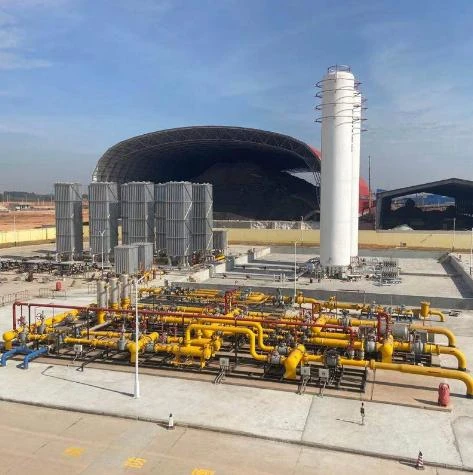
Dec . 04, 2024 16:23
Back to list
Gas Pressure Regulator Overview and Applications for Efficient Energy Management
Understanding Gas Pressure Regulators Functionality and Applications
Gas pressure regulators play a critical role in various industries, ensuring that gases flow at safe and usable pressures. These devices are essential in applications ranging from medical facilities to industrial processes, and even in residential heating systems. This article delves into the working principles, applications, benefits, and maintenance of gas pressure regulators.
What is a Gas Pressure Regulator?
A gas pressure regulator is a mechanical device that automatically adjusts the pressure of gas coming from a high-pressure source to a lower, controlled output pressure. The primary function of these regulators is to maintain consistent pressure levels, which is crucial for the safe and efficient operation of gas-fueled appliances and machinery.
Working Principle
Gas pressure regulators operate based on the principle of balancing forces. The device typically consists of a diaphragm that responds to the gas pressure in the system. When gas enters the regulator, it moves the diaphragm in response to the pressure. If the output pressure exceeds a predetermined level, the diaphragm activates a valve that constricts the flow of gas, reducing the output pressure. Conversely, if the pressure drops below the set point, the diaphragm allows more gas to flow through the valve, thus maintaining a constant output pressure.
Most gas regulators also incorporate a spring mechanism that aids in this function. The spring exerts a force opposite to that of the diaphragm, creating a balance that dictates how much gas can flow through the regulator. The settings can often be adjusted to meet specific pressure requirements for different applications.
Applications of Gas Pressure Regulators
Gas pressure regulators are utilized across a wide range of applications
1. Residential Use In homes, regulators are vital for controlling natural gas supplied to appliances like stoves, water heaters, and furnaces. They ensure that the appliances receive a consistent and safe gas flow.
2. Medical Facilities In hospitals, gas pressure regulators are essential for equipment that delivers medical gases (like oxygen or nitrous oxide). Accurate pressure control is crucial for patient safety and effective treatment.
.
4. Welding and Cutting In welding applications, gas regulators are used to control the delivery of gases such as acetylene, oxygen, or argon. Precise pressure regulation is vital for the quality of welds and safety in industrial environments.
مخفض ضغط الغاز

Benefits of Gas Pressure Regulators
1. Safety By regulating gas pressure, these devices minimize the risk of gas leaks, explosions, and equipment damage. Lowering excessive pressure protects gas appliances and provides a safer working environment.
2. Efficiency Regulators optimize the performance of gas appliances, ensuring they function at the appropriate pressure levels. This can lead to better fuel efficiency and reduced operational costs.
3. Versatility Gas pressure regulators are designed to be versatile, with models available for various gas types and pressure requirements. This adaptability makes them suitable for numerous applications.
4. Ease of Use Most regulators are user-friendly, with some models allowing for easy adjustments in the field to accommodate changing gas pressure needs.
Maintenance of Gas Pressure Regulators
To ensure longevity and optimal performance, regular maintenance of gas pressure regulators is crucial. Here are a few maintenance tips
1. Regular Inspections Routinely check for leaks or signs of wear and tear. Inspecting and testing regulators can prevent unexpected failures.
2. Cleanliness Keep the regulator and associated piping clean and free from debris that might obstruct gas flow.
3. Calibration Periodically calibrate the regulator to ensure it maintains the desired pressure settings.
4. Professional Servicing Engage qualified technicians for servicing and repairs to ensure compliance with safety standards.
Conclusion
Gas pressure regulators are indispensable devices that enhance safety, efficiency, and functionality in various applications. By understanding their operation, benefits, and maintenance requirements, users can effectively utilize these devices to ensure safe and efficient gas management. From residential setups to industrial applications, gas pressure regulators contribute significantly to reliable gas utilization, underscoring their importance in everyday life and industry.
Latest news
-
Safety Valve Spring-Loaded Design Overpressure ProtectionNewsJul.25,2025
-
Precision Voltage Regulator AC5 Accuracy Grade PerformanceNewsJul.25,2025
-
Natural Gas Pressure Regulating Skid Industrial Pipeline ApplicationsNewsJul.25,2025
-
Natural Gas Filter Stainless Steel Mesh Element DesignNewsJul.25,2025
-
Gas Pressure Regulator Valve Direct-Acting Spring-Loaded DesignNewsJul.25,2025
-
Decompression Equipment Multi-Stage Heat Exchange System DesignNewsJul.25,2025

